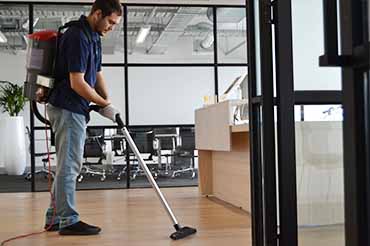It is essential to understand what these fine, pesky particles called dust actually are and how they accumulate before you can control them effectively. If it does get into your office, despite your best efforts, this post will also provide some effective tips to remove it from your space.
What Is Dust?
Most office dust consists of many tiny particles, including soil, hair, dead skin, fabric fibres, pollen, food crumbs and other things that can be broken down or crushed.
Dust also consists of dust mites (microscopic organisms that feed on dead human skin cells), mould, bacteria and pollutants such as asphalt, lead and arsenic. That is why dust causes allergic reactions such as congestion, sneezing, and coughing.
Read also: Natural Cleaning Products For Eco-Friendly Cleaning
Tips For Controlling Dust In Your Office
Unlike other types of dirt in the office, dust seems mysterious. It creeps in and slowly accumulates everywhere. Most times, we only notice dust when they form a thin grey film on surfaces in the office, but what about those specks floating in the air? Removing existing dust usually entails sweeping, vacuuming and wiping. However, preventive measures that keep the dust out of your office are equally, if not more, important.
-
Keep The Dust Outside
Seventy per cent of dust in the office comes from outdoors. To keep dust at bay in your office, you’ll need to provide a quality doormat so that everyone wipes their feet before entering the office. Choose a doormat made of thick fibre, like coconut coir, to trap dirt and soil from shoes.
Furthermore, examine the doors and windows in your office. Check the caulking, weather stripping and screens and replace them when necessary. Also, limit the amount of time you leave the windows open.
-
Pay Attention to Your HVAC System
Invest in quality air filters with a high MERV (Minimum Efficiency Reporting Value) rating. This is particularly essential in capturing dust allergins because the higher filter is rated, the more effective it is in capturing tiny particles.
Inspect the filter at least once a month and replace old filters with new ones. Most filter types have an effective period of between 30 to 90 days. If you suspect a problem in your HVAC system, call a professional to diagnose and repair the fault.
-
Clean Surfaces With a Damp Microfibre Cloth.
Cleaning with a microfibre cloth dampened with clean water effectively removes dust from surfaces in your office. The water in the microfibre cloth traps dust, preventing it from floating onto another surface. Add soap to the water when cleaning a greasy surface and disinfectants when you want to disinfect and clean simultaneously.
-
Vacuum and Mop Your Floors Often
Office floors are prone to dust overload. That’s because people pick up dust from outside with their shoes and clothes and unwittingly deposit it on the floor. Thorough daily vacuuming and mopping remove a day’s worth of dust from your office floor.
Vacuum the floor first to remove loose particles, then use a damp mop to scrub off any remaining dust.
Read also: How To Get The Perfect Commercial Cleaning Service In Melbourne
In Conclusion
Dust can be stubborn and somewhat unavoidable in the office. However, with these helpful tips, you can keep them at bay and enjoy cleaner air and surfaces in your office.
Need more cleaning tips? Visit our blog and explore many expert cleaning guides.


